1. Arakji RY, Lang KR. Avatar business value analysis: a method for the evaluation of business value creation in virtual commerce. J Econ Commer Res. 2008; 9(3):207–218.
2. Lu HP, Wang SM. The role of internet addiction in online game loyalty: an exploratory study. Internet Res. 2008; 18(5):499–519.

3. Yoon HM, editor. “70% of Korean are gamers...” Increased playing time of internet game. Chosun Daily Newspaper;2020 Aug 7: Sect. IT.
4. Li W, O'Brien JE, Snyder SM, Howard MO. Characteristics of internet addiction/pathological internet use in U.S. university students: a qualitative-method investigation. PLoS One. 2015; 10(2):e0117372. PMID:
25647224.

5. Kang SK, Kim GJ. An comparative study on the self-regulation of the digital game. J Korea Game Soc. 2012; 12(6):107–120.

6. Sung W. A study on the effect of the policy of online game shutdown on the game time of youth. Soc Sci Res Rev. 2014; 30(2):233–256.
7. Kim MY. A study on the problem and its improvement in game shutdown policy. Legis Polic. 2012; 6:61–88.
8. Eklund L, Bergmark KH. Parental mediation of digital gaming and internet use. Proceedings of the 8th International Conference on the Foundations of Digital Games (FDG 2013). 2013 May 14-17; Chania, Greece. Santa Cruz, CA, USA: Society for the Advancement of the Science of Digital Games;2013. p. 63–70.
9. Kutner LA, Olson CK, Warner DE, Hertzog SM. Parents' and sons' perspectives on video game play: a qualitative study. J Adolesc Res. 2008; 23(1):76–96.
10. Beck J, Wade M, editors. Got Game: How the Gamer Generation is Reshaping Business Forever. Boston, MA, USA: Harvard Business School Press;2004.
11. Han DH, Jung EJ, Park SO, Kim MC, Bae SJ, editors. A Study on the Difference between the Professional Approach Methodology and Coping Strategies in Internet Gaming Disorder. Naju, Korea: Korea Creative Content Agency;2018.
12. Kim JY, Kim D, Lee J, Mo SH, Chang G. A study on the perception types of online games and their characteristics. J Korea Game Soc. 2013; 13(4):91–104.

13. Byrne BM, editor. Structural Equation Modeling with EQS and EQS/Windows. Thousand Oaks, CA, USA: Sage Publications;1994.
14. Anderson JC, Gerbing DW. The effect of sampling error on convergence, improper solutions, and goodness-of-fit indices for maximum likelihood confirmatory factor analysis. Psychometrika. 1984; 49:155–173.

15. Lee C, Bae S, Nam JJ, Jin JC, Han DH. Development and verification of a web board game scale. Psychiatry Investig. 2020; 17(2):106–113.

16. Cole DA. Utility of confirmatory factor analysis in test validation research. J Consult Clin Psychol. 1987; 55(4):584–594. PMID:
3624616.

17. Marsh HW, Balla JR, Mcdonald RP. Goodness-of-fit indexes in confirmatory factor analysis: the effect of sample size. Psychol Bull. 1988; 103(3):391–410.

18. Steiger JH. Structural model evaluation and modification - an interval estimation approach. Multivariate Behav Res. 1990; 25(2):173–180. PMID:
26794479.
19. Hu LT, Bentler PM. Cutoff criteria for fit indexes in covariance structure analysis: conventional criteria versus new alternatives. Struct Equ Modeling. 1999; 6(1):1–55.

20. Carlson SA, Fulton JE, Lee SM, Foley JT, Heitzler C, Huhman M. Influence of limit-setting and participation in physical activity on youth screen time. Pediatrics. 2010; 126(1):e89–96. PMID:
20547642.

21. Gentile DA, Reimer RA, Nathanson AI, Walsh DA, Eisenmann JC. Protective effects of parental monitoring of children's media use: a prospective study. JAMA Pediatr. 2014; 168(5):479–484. PMID:
24686493.
22. Su B, Yu C, Zhang W, Su Q, Zhu J, Jiang Y. Father-child longitudinal relationship: parental monitoring and internet gaming disorder in Chinese adolescents. Front Psychol. 2018; 9:95. PMID:
29467704.

23. Krossbakken E, Torsheim T, Mentzoni RA, King DL, Bjorvatn B, Lorvik IM, et al. The effectiveness of a parental guide for prevention of problematic video gaming in children: a public health randomized controlled intervention study. J Behav Addict. 2018; 7(1):52–61. PMID:
29313731.

24. Aarseth E, Bean AM, Boonen H, Colder Carras M, Coulson M, Das D, et al. Scholars' open debate paper on the World Health Organization ICD-11 Gaming Disorder proposal. J Behav Addict. 2017; 6(3):267–270. PMID:
28033714.

25. van Rooij AJ, Ferguson CJ, Colder Carras M, Kardefelt-Winther D, Shi J, Aarseth E, et al. A weak scientific basis for gaming disorder: let us err on the side of caution. J Behav Addict. 2018; 7(1):1–9. PMID:
29529886.

26. Hong JS, Kim SM, Jung JW, Kim SY, Chung US, Han DH. A comparison of risk and protective factors for excessive internet game play between Koreans in Korea and immigrant Koreans in the United States. J Korean Med Sci. 2019; 34(23):e162. PMID:
31197982.

27. Griffiths MD, Király O, Pontes HM, Demetrovics Z, editors. An Overview of Problematic Gaming. Oxford, UK: Oxford University Press;2015.
28. King DL, Delfabbro PH, Doh YY, Wu AM, Kuss DJ, Pallesen S, et al. Policy and prevention approaches for disordered and hazardous gaming and internet use: an international perspective. Prev Sci. 2018; 19(2):233–249. PMID:
28677089.

29. Vondráčková P, Gabrhelík R. Prevention of internet addiction: a systematic review. J Behav Addict. 2016; 5(4):568–579. PMID:
27998173.

30. Holtz P, Appel M. Internet use and video gaming predict problem behavior in early adolescence. J Adolesc. 2011; 34(1):49–58. PMID:
20303580.

31. Király O, Griffiths MD, King DL, Lee HK, Lee SY, Bányai F, et al. Policy responses to problematic video game use: a systematic review of current measures and future possibilities. J Behav Addict. 2018; 7(3):503–517. PMID:
28859487.

32. Zhu JJ, Zhang W, Yu CF, Bao ZZ. Early adolescent internet game addiction in context: how parents, school, and peers impact youth. Comput Human Behav. 2015; 50:159–168.

33. Choung HM, Lee DS. A study on difference of internet game addiction tendency according to the game with use. J Korea Soc Comput Inf. 2008; 13(2):159–166.
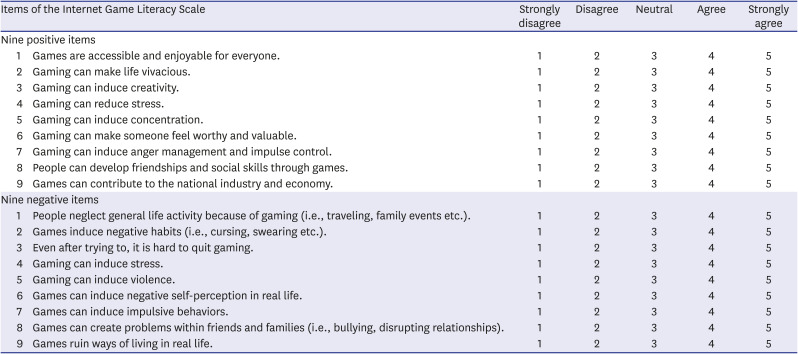
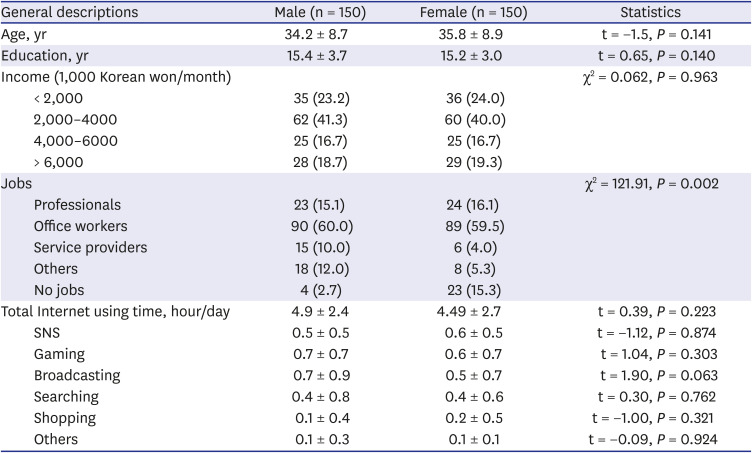
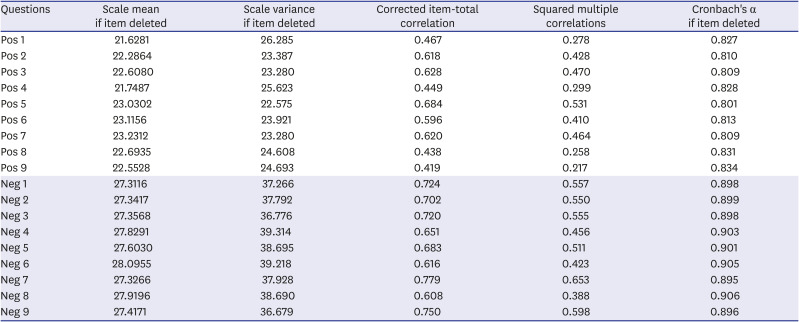
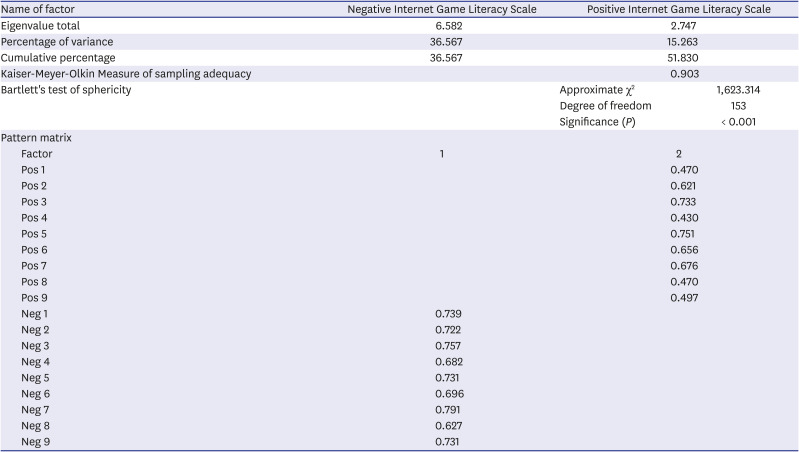






 PDF
PDF Citation
Citation Print
Print



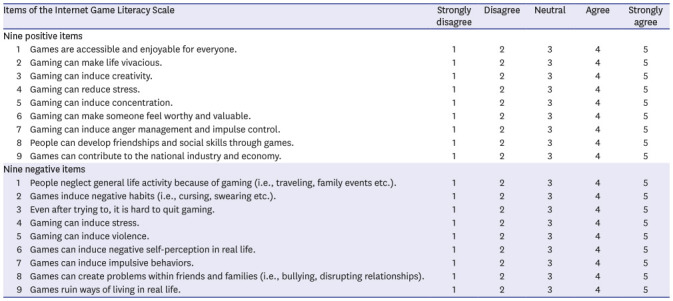
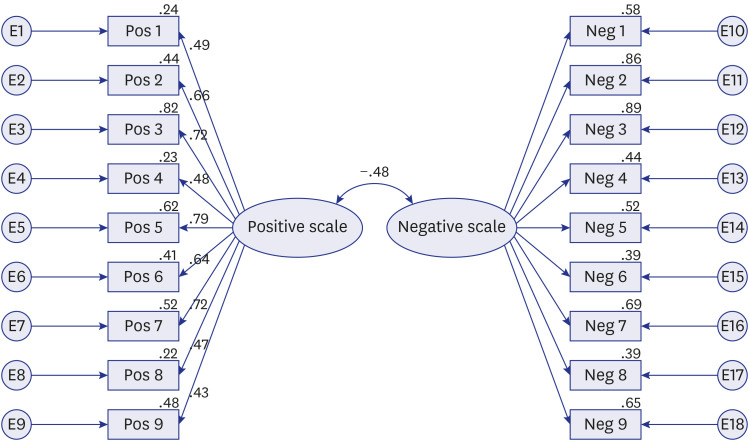
 XML Download
XML Download